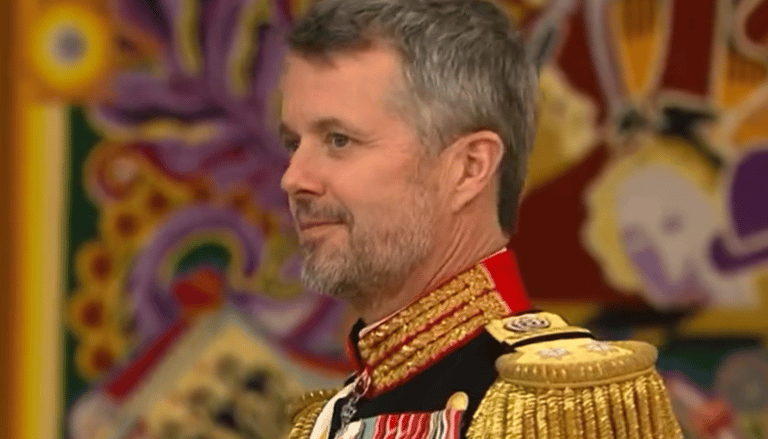Royal Resilience: How King Frederik X Strengthens Denmark’s Unbreakable Bond with Greenland
4/24/20254 min read


Royal Resilience: How King Frederik X Strengthens Denmark’s Unbreakable Bond with Greenland
A Regal Connection Spanning Centuries
For over 600 years, the Danish royal family has been a steadfast guardian of Greenland, a vast Arctic territory that holds a unique place in the Kingdom of Denmark. Since 1380, when Greenland officially came under the Danish Crown, this relationship has weathered colonial challenges, geopolitical tensions, and calls for independence. Recently, King Frederik X spoke out about his deep love for Greenland, reaffirming a bond that feels more personal than political. As Joel the Dane shared in a viral X thread on April 22, 2025, this connection, especially Frederik’s with the Inuit people, is truly "unbreakable." Let’s dive into why this royal relationship matters and how Frederik X has earned the respect of Greenlanders in ways few monarchs ever could.
A King Who Walks the Ice
King Frederik X isn’t your typical monarch. Before ascending the throne, he was a soldier, an adventurer, and a student of Inuit culture. In 1995, Frederik completed training with the Danish Frogman Corps, an elite special forces unit where only 0.1% of applicants succeed. He insisted on no special treatment, earning the nickname "Pingo" after his wetsuit made him waddle like a penguin—a playful moniker that still follows him! But his real test came in 2000 with the Sirius 2000 Expedition, a grueling 2,800 km dogsled journey across Greenland’s northern ice. Facing temperatures below -50°C, polar bears, and extreme isolation, Frederik traveled alongside Inuit hunters, learning their ways and earning their trust.
Frederik’s time in Qaanaaq, the northernmost town in the world, was transformative. He lived as the Inuit did—hunting seals, setting bird traps, and cooking with local ingredients—without assistants or bodyguards. This wasn’t just a royal visit; it was a deep immersion into a culture that has survived the harshest conditions for centuries. The Inuits accepted him as one of their own, a rare honor for any outsider, let alone a future king.
Greenland’s Place in the Danish Realm
Greenland’s relationship with Denmark has evolved significantly since 1380. Integrated into the Danish realm in 1953, Greenland gained home rule in 1979 and self-rule in 2009, giving it more autonomy while remaining part of the Kingdom. Today, Greenland has two seats in Denmark’s parliament, but tensions persist, especially with external interests, like Donald Trump’s 2019 proposal to buy the island. Amid these challenges, the Danish royal family plays a crucial role in maintaining unity. Frederik’s parents, including Queen Margrethe, often wore Greenlandic national dress to honor the culture, a tradition Frederik and Queen Mary continue with their children, Prince Vincent and Princess Josephine, who bear Inuit names as a tribute.
Frederik’s recent speech, as highlighted by Joel The Dane, addressed these dynamics: "We live in a changed reality. There should be no doubt about my love for Greenland, and my connection to the Greenlandic people is intact." His words come at a time when Greenland’s aspirations for independence are growing, yet the royal family remains a beloved symbol of shared history. Frederik’s actions—like dancing with locals at a Greenlandic pub or wearing the Order of the Elephant, Denmark’s highest honor, during state events—show a monarch who bridges tradition with genuine cultural respect.
A Legacy of Protection and Partnership
The Danish monarchy’s role in Greenland isn’t just ceremonial. During World War II, the Sirius Patrol, a special forces unit Frederik later trained with, protected Greenland by locating German radar stations. Today, the patrol continues to enforce Danish sovereignty by dogsled, a testament to the rugged partnership between Denmark and its Arctic territory. Frederik’s experiences with the Sirius Patrol and the Inuit hunters highlight a legacy of mutual reliance. As he rode alongside his Qaanaaq friends during the Sirius Expedition, locals declared him a hero of Greenland—a title few royals could claim.
Queen Mary, too, has embraced this bond. A 2024 visit to Greenland with Frederik and their twins debunked rumors of a marital crisis, showing a united front as they engaged with the community. The royal family’s subtle tributes, like naming their daughter Princess Josephine "Ivalo" (an Inuit name), reflect a commitment to healing past colonial injustices and fostering a stronger connection between Denmark and Greenland.
Why This Matters Today
In a world where global powers eye Greenland for its strategic location and resources, Frederik X’s personal dedication offers a counterpoint to purely political narratives. His story reminds us that cultural understanding and respect can transcend borders and histories. By living among the Inuit, learning their traditions, and risking his life on the ice, Frederik has built a bridge that strengthens the Danish Kingdom’s unity. As Joel the Dane’s X thread beautifully captures, Frederik is a king who doesn’t just rule—he connects.
What’s Next for Denmark and Greenland?
King Frederik X’s reign is still young, but his actions signal a monarchy that’s adapting to modern challenges while honoring its past. As Greenland navigates its future, the royal family’s role will likely remain pivotal. But what does this mean for the next generation? Will Frederik’s children continue his legacy in Greenland? And how will Denmark balance Greenland’s push for independence with their shared history?
Let me know your thoughts: How can modern monarchies stay relevant in a changing world? What role should cultural immersion play in diplomacy? And could Frederik’s approach inspire other leaders to build bridges with Indigenous communities?
Photo Credit: royalcentral.co.uk
hello@boncopia.com
+13286036419
© 2025. All rights reserved.